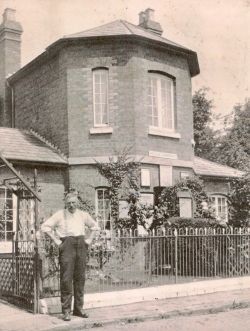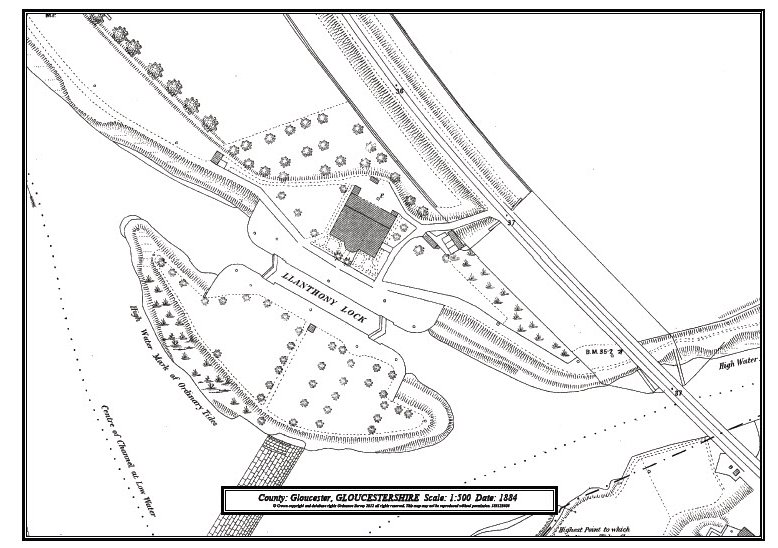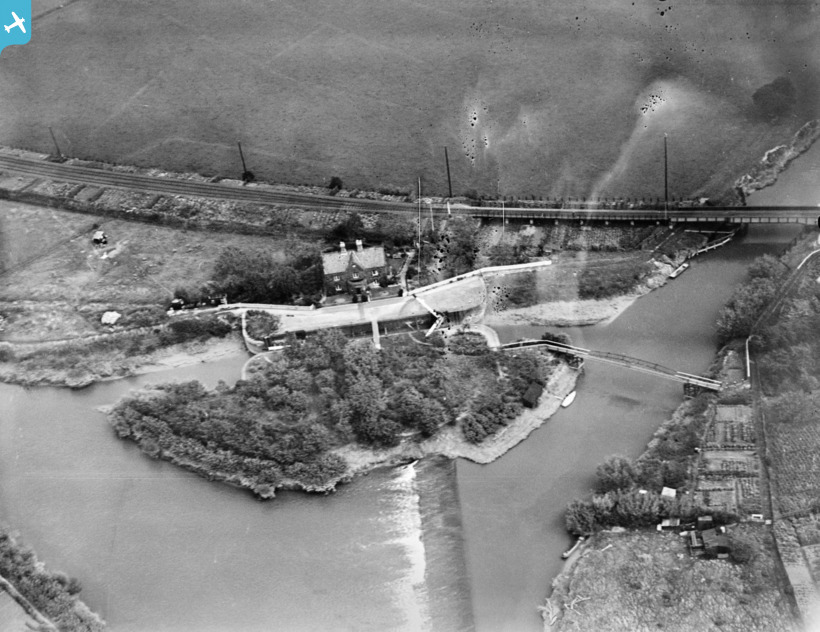Canal Restoration at Llanthony Lock

The connection to 2,500 miles of navigable waterways is one of the most fundamental points in the Canal’s restoration. In 2008 an answer was found to that question by the purchase of Llanthony Lock which gave us a potential entry to the national network, and even part of the River Severn itself……
Nearest postcode: GL2 5HH
OS Grid Ref: SO 82225 18276
What3Words: ///scans.socket.dock
Acquring Llanthony Lock – its significance for the Trust

Both Maisemore and Llanthony locks were used as routes to the Canal as can be seen from historical records, but only Llanthony permits full size H&G width boats to gain entry to the Canal.
There were also issues in using Maisemore as this would involve all boats coming to the H&G having to turn in the River just below The Wharf House at Over so that they would be facing upstream to have steerage to gain entry to Over lock. By using Llanthony, boats will already be approaching from downstream and a much safer approach to Over is permitted.
Although the Canal Trust already owned the point of entry to the River Severn at Over, it only connected us to the currently un-navigable Severn below Llanthony and Maisemore weirs. Until the 1980’s British Waterways owned both Llanthony and Maisemore locks, but before full restoration of the Canal was on the agenda, Maisemore was sold.
Early in 2007 a similar fate was about to happen to Llanthony and so complex negotiations commenced to secure this crucial site for the Canal Trust.
A national review by British Waterways led to their decision early in 2007 to dispose of Llanthony as a non-operational asset. This consisted of a pair of cottages, the lock, and surrounding land. Acquiring the whole site ensures the Trust has the land needed for modern day requirements for safe operation and entry to the lock, as well as an income stream to make this key operational asset self financing in the long term.
In June 2008 the Trust received the very welcome news of a legacy, so what might have been an investment with borrowed money, funded by the income from the cottages, became a sound investment for the Trust, whilst securing this crucial operational asset.
Llanthony will give the Canal, and the Canal Trust, a real presence in the City, a considerable PR asset of the future. The site is just to the edge of the huge Gloucester Quays redevelopment and to the corner of Gloucester Docks, with a new direct off road cycle link from here to Over, and the new south west bypass.



Restoration work at Llanthony
When the Canal Trust bought Llanthony Lock and cottages the whole area was very overgrown. The volunteers put together a programme of work to tidy the site up over the next couple of years and to use it as a shop window for the Trust within the City of Gloucester in the future. Over the coming months exploratory surveys were carried out and from these, developing specific work programmes which would not only stop the site from deteriorating any further but would start the long haul in realising its full potential.
A major clearance of the undergrowth on both side of the river was the first task. The notorious Japanese Knotweed had taken a good hold of the river banks, and so a programme was put in place to eradicate it. This would be a rolling programme over a number of years, gradually weakening the weed’s hold on the banks. The undergrowth around the lock was cleared to stop any further deterioration of the brickwork.
A wooden shelter was built for the volunteers as well as renovation of an outside toilet of one of the cottages. A small, volunteer, car park was constructed on some of the cleared land on the opposite side of the River. Volunteers also created a garden at the entrance to the cottages’ footbridge over the Severn.
The original footbridge over the lock to the cottages was in a poor state and had been superceded some years ago and so it was temporarily removed until a future time. Wooden fencing has been renewed around the lock and cottages giving the residence some privacy from passing visitors. Ornate iron fencing in front the cottages has been painstakingly restored. A number of trees were removed where they posed a safety risk, together with regular planting with native trees where ever possible.
Like all our sites the encouragement of wildlife is important and a number of bird boxes have been installed. On-going maintenance of this large site keep a regular team of our volunteers very busy. There are no immediate plans to restore the lock.
The Severn Way footpath runs through the centre of the Lock. In conjunction with Gloucester City Council some interpretive boards have been erected by the lock. These give visitors information about the history of the area. Please respect the lock keepers cottages’ privacy.
Llanthony Lock – History

The lock was built in 1871 to allow boats passing up and down the River Severn to avoid the new weir just to the south. This had been constructed to ensure that there was always a minimum depth of six feet in the river above Gloucester.
Among the lock cottages tenants were the Presdee family. They provided two generations of Lock Keepers – Henry Presdee, senior (1865–1948) and son, Henry James Presdee Junior, who retired in 1956.
More on Llanthony Lock



Canal Walk Leaflets Updated
Over the past twelve months the six existing Canal Walk leaflets have been updated, and can now be purchased online. […]

Hereford and Gloucester Canal Walks
Hereford and Gloucester Canal Walks A series of walks leaflets are available covering parts of the Herefordshire and Gloucestershire Canal […]












